Known for silver mines and Las Vegas entertainment, Nevada’s arid climate may seem devoid of life. However, it’s not! Life here is just different, and the animals adapted. Snakes, lizards, and other animals that can handle limited rainfall and sparse vegetation thrive here.
To discover which Nevada lakes have the most snakes, we turned to iNaturalist.org. It’s a network of volunteers who report sightings of various animals worldwide. Properly identified, some photos are used in research projects. It’s not all-inclusive but is a good indication of which snakes you’ll find in various areas.
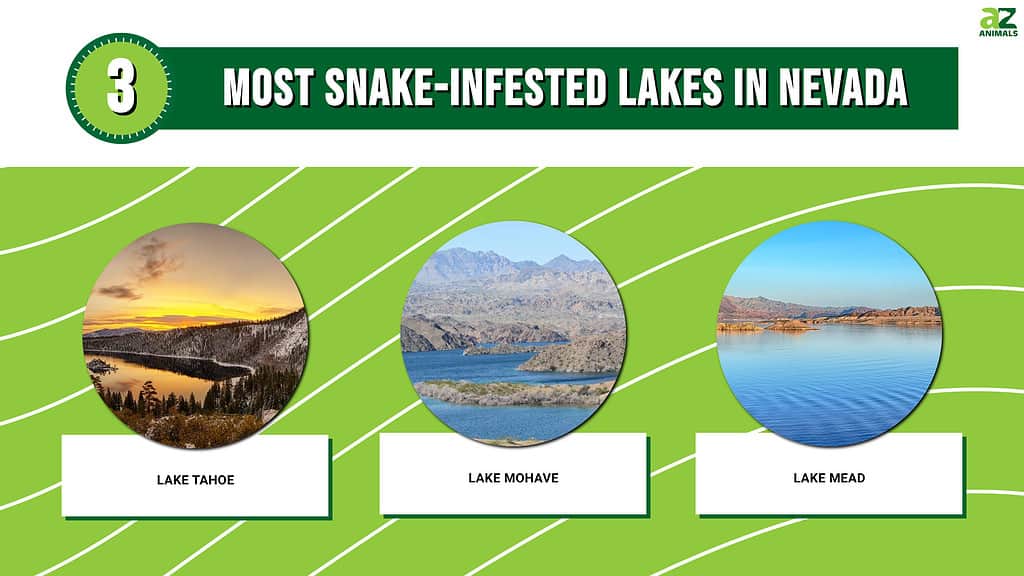
Are There Water Snakes in Nevada Lakes?
Strictly speaking, no. North American water snakes are any of the snakes in the Nerodia genus, which contains (at present count) 10 species and several subspecies. They’re native to the eastern half of the United States, small areas of southern Canada, and northern Mexico.
Water snakes are nonvenomous colubrids of the natricine subfamily, which also includes garter, ribbon, and Dekay’s brownsnakes. These snakes generally have stockier bodies, vertical bars along their lip scales, eyes that are more on top of their heads than the sides, and extremely sharp teeth.
They spend much of their day in the water hunting or basking on branches, logs, and rocks near the water and are often confused with venomous snakes like cottonmouths — also only present in the eastern half of the country.

Plain-bellied watersnakes are harmless watersnakes that only live in the eastern half of the U.S. — not in Nevada.
©iStock.com/lbolton09
Can All Snakes Swim?
Snakes are excellent swimmers, and when the summer heats up around Nevada lakes, most of them will take a dip to cool off. Rattlesnakes, in particular, are known for doing this, leaving people surprised as a rattlesnake swam across the water’s surface.
While some snakes are more inclined to spend their waking moments in the water, most aren’t. They need it to drink or bring down their body temperature when it’s really hot and dry but otherwise don’t spend much time in the water.
A few, like common garter snakes, can spend hours in the water — they’re natricine snakes that eat many amphibians and the occasional fish. However, most use it as a resource or an escape from a predator.
Most Snake-Infested Lakes in Nevada
Although there are nearly 30 snake species in Nevada, there aren’t any aquatic snakes. In this state, you’re more likely to find snakes around the edges of the Silver State’s lakes than in the water.
1. Lake Tahoe
The most snake-infested lake in Nevada is probably Lake Tahoe. This volcanic lake is surrounded by forests and mountains that make a perfect snake habitat. During the winter, the ski resorts open, but between April and October, the snakes are out and about.
Happily, for the less-than-snake-loving among you, the most common snakes slithering around Lake Tahoe are harmless garter snakes — western terrestrial, common, and Sierra garter snakes. Depending on their habitat, different garter snakes often share similarities in their diets. Many of them prefer slugs, frogs, toads, salamanders, and small fish.
Lake Tahoe is also home to one of North America’s only boas, the northern rubber boa. It’s a docile, gentle snake that is completely harmless to people. If you get to see one, it’s a real treat. If you were hoping to avoid rattlesnakes here, you’re out of luck. There are a couple of rattlesnake species that you should admire from a distance: the Great Basin and northern Pacific rattlesnakes.

Lake Tahoe’s beautiful pine-studded hills are home to rattlesnakes, boas, and gopher snakes.
©Kuen Hoong/Shutterstock.com
2. Lake Mohave
Another popular southwestern water sports area, Lake Mohave is also located on the Colorado River and was created by Davis Dam. Boaters, fishers, and water skiers love it for the wide open water and proximity to Laughlin, Nevada. It’s just a hop and a skip from a boat to a night on the town.
The number of snakes around Lake Mohave won’t disappoint snake lovers, either. Nevada’s Lake Mohave is nearly as snake-infested as Lake Tahoe, with a solid snake population. The venomous snakes are here to stay, and this area has a decent population of the ever-nervous and ready-to-bite western diamondback. Other venomous snakes living around here are southwestern speckled rattlesnakes and sidewinder.
And then we get to the nonvenomous snakes, which include gopher snakes, the sometimes rattlesnake-eating coachwhip, and California kingsnake. You may also see gopher snakes, western patch-nosed snakes, ground snakes, and long-nosed snakes.
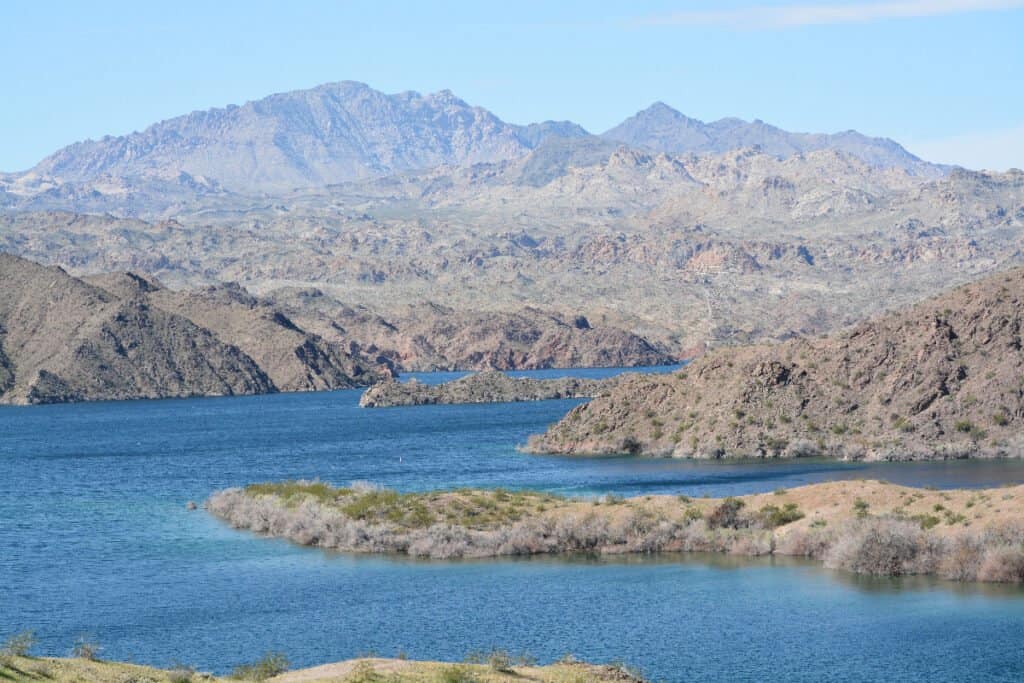
Great for snake hunting, Lake Mohave is also a popular vacation spot!
©Norm Lane/Shutterstock.com
3. Lake Mead
Situated along the Colorado River and created by Hoover Dam, Lake Mead is the perfect destination for families who love boating and water sports. Early in the morning, the water’s surface is as smooth as glass, making water skiing especially rewarding.
However, snakes lurk along the edges of the popular vacation spot! The most common snakes around this river are rattlesnakes. Specifically, sidewinders and southwestern speckled rattlesnakes. Both are really interesting for different reasons — the sidewinder because of its unique movement across the sand and the southwestern speckled rattlesnake because it’s a work of natural art. However, a bite from either of these snakes will mean an early end to your vacation with a dramatic trip to the hospital. Of course, these aren’t the only snakes around Lake Mead. Other common snakes include coachwhips, long-nosed snakes, and Sonoran lyre snakes.
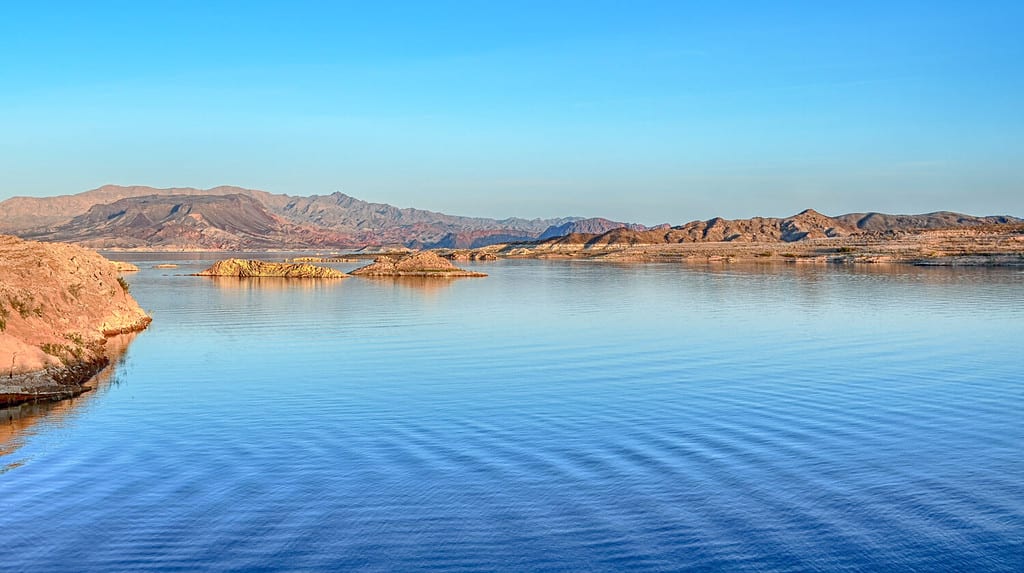
Lake Mead’s stunning desert mountain vistas are home to snakes like sidewinders and speckled rattlesnakes.
©Steve Lagreca/Shutterstock.com
Summary of the Most Snake-Infested Lakes in Nevada
Nevada’s terrain makes the perfect habitat for snakes, ranging between rocky and mountainous to scrub-covered deserts. Adding the state’s lakes makes it even better! Here’s a summary of the most snake-infested lakes in Nevada.
| Number | Lake Name | Snakes Found |
|---|---|---|
| 1. | Lake Tahoe | Western terrestrial, common, and sierra garter snakes; gopher snakes, northern rubber boa, northern Pacific rattlesnake, Great Basin rattlesnake |
| 2. | Lake Mead | Gopher snakes, coachwhips, California kingsnakes, gopher snakes, western patch-nosed snakes, ground snakes, and long-nosed snakes |
| 3. | Lake Mohave | Sidewinder, southwestern speckled rattlesnakes, gopher snakes, coachwhips, Sonoran lyre snakes, long-nosed snakes |
Other Animals
Lest you believe it’s all snakes and lizards in Nevada, we’ve found a few other critters to share with you. Nevada’s home to a vast array of wildlife, including birds, bees, insects, and mule deer. Here are a few:
Bighorn Sheep
These mountain-climbing sheep are known for the males’ large, curved horns. They’re native to western North America and were once present in bigger numbers. However, unregulated hunting in earlier years and periodic outbreaks of respiratory illnesses have reduced their population.
Bighorn sheep prefer mountain grasslands and meadows and usually winter at lower populations. But they’re also seen standing on sheer cliff faces!
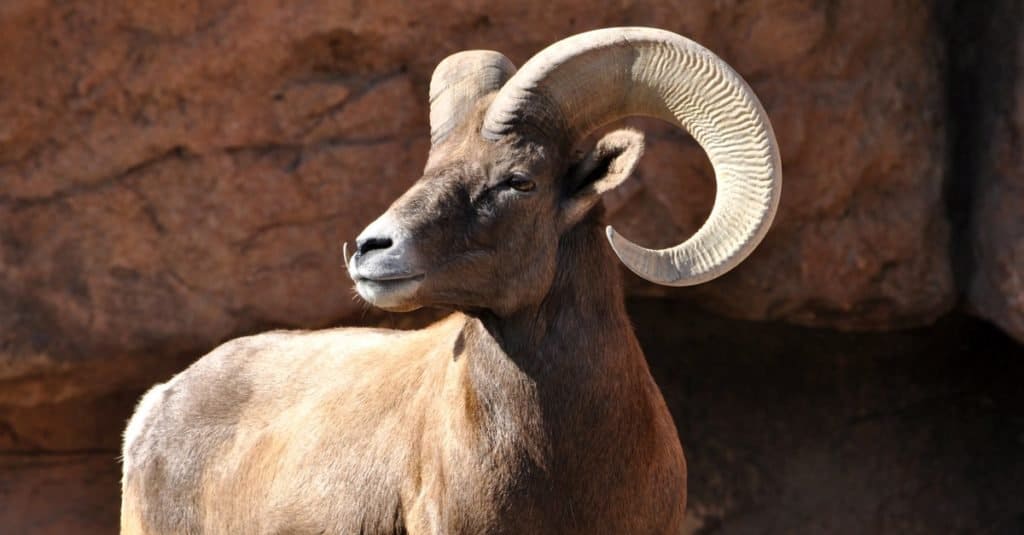
Male bighorn sheep have huge, curved horns.
©Georgia Evans/Shutterstock.com
Greater Roadrunner
If you’ve never seen a greater roadrunner in person, this bird is surprisingly big. When you see them on the ground, they’re almost twice as tall as a pigeon and cruise along fast! However, they’re pretty awkward flyers which makes you wonder why they have wings.
Greater roadrunners are only present in the southern corner of Nevada, but they occur all across the southern U.S. and much of Mexico. These birds run at speeds up to 20 miles per hour, but a few credible sources have clocked them at closer to 26 miles per hour. Roadrunners eat spiders, scorpions, mice, small birds, lizards, and especially snakes! This is definitely the bird to have around if you don’t like seeing legless reptiles.
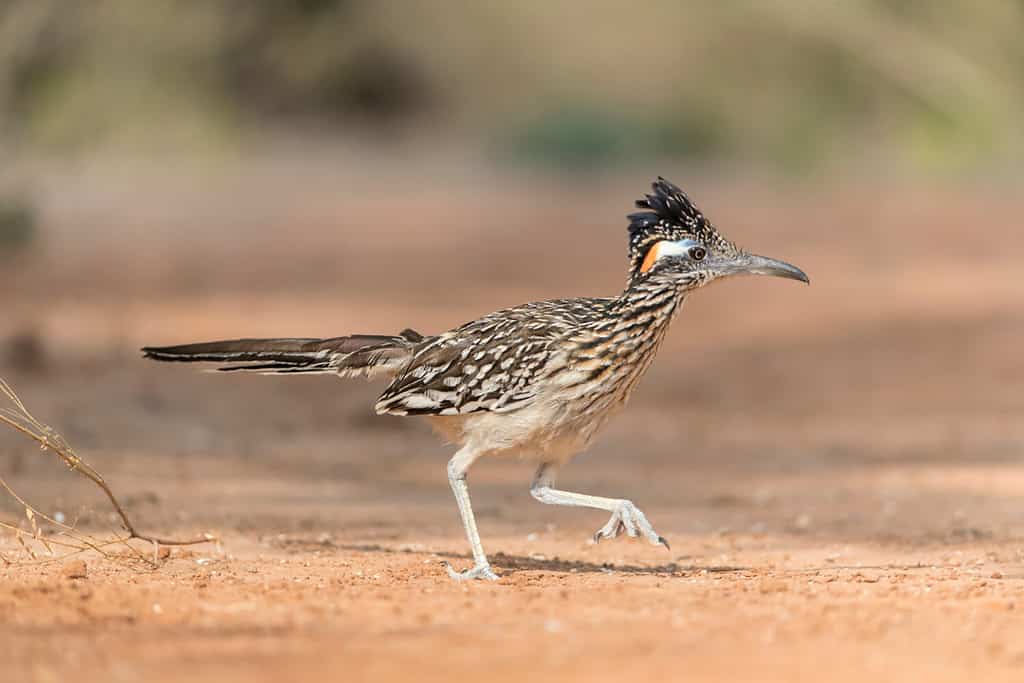
Greater roadrunners only fly short distances and spend most of their time on the ground.
©Dennis W Donohue/Shutterstock.com
Cinnamon Teal
Although its range extends throughout most of Nevada, cinnamon teals are more common around the lakes and rivers. The females are brown and look similar to other ducks you might see, but the males sport bright reddish plumage and stand out.
Cinnamon teals usually feed at the edges of shallow wetlands and near reeds. They’re more active in the morning and late afternoon and get most of their food at or near the water’s surface. These birds eat seeds, aquatic plants, zooplankton, and insects.
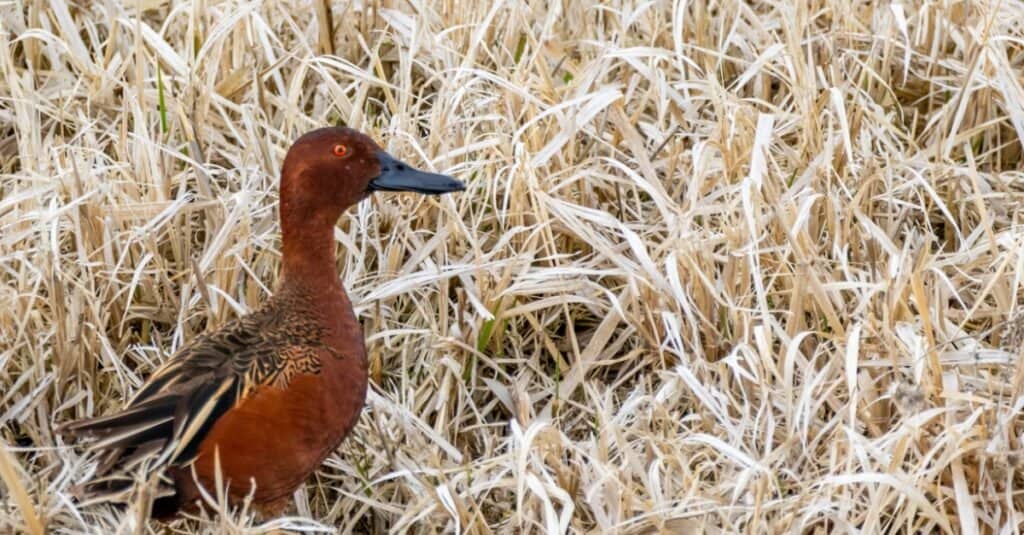
Although both the male and female of the cinnamon teal are brown, the male has a reddish tint.
©Michael Chatt/Shutterstock.com
The photo featured at the top of this post is © Colin D. Young/Shutterstock.com
Thank you for reading! Have some feedback for us? Contact the AZ Animals editorial team.






